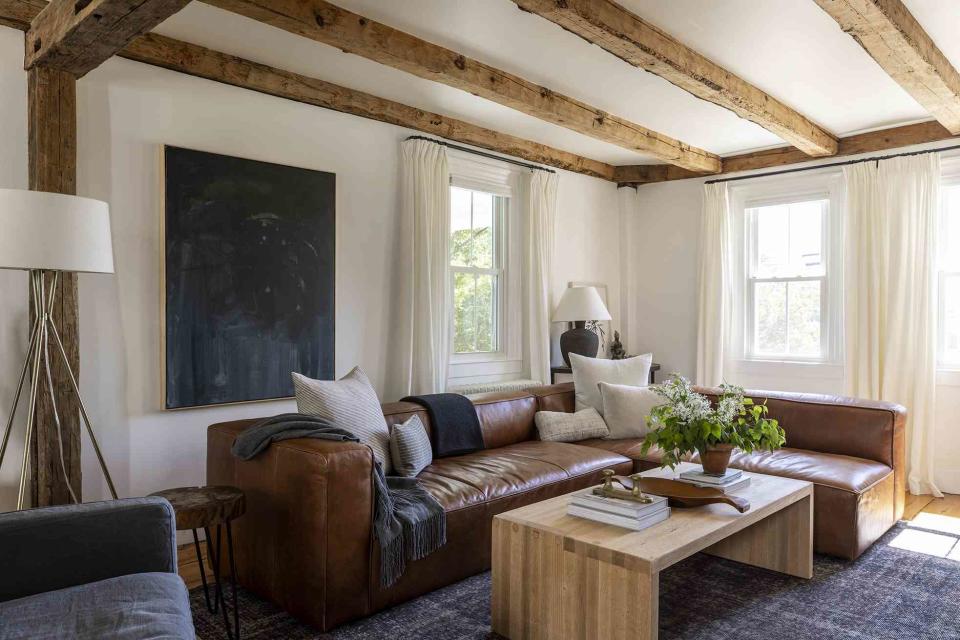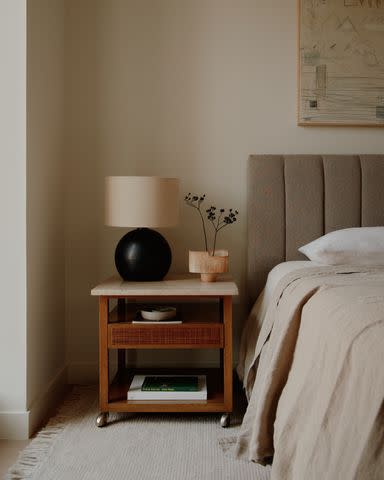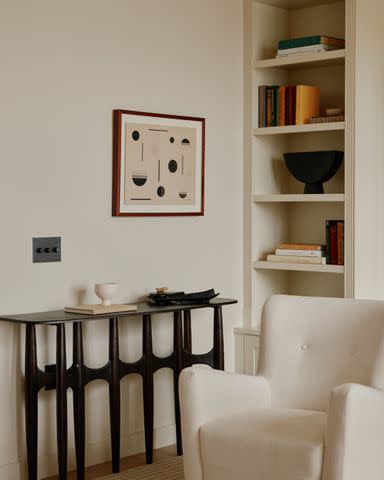What Is Transitional Design and Why Is It So Popular Right Now?
Three experts describe a design style that fits the moment.

Maura McEvoy; Design by Sarah Madeira Day
It’s not always easy to describe your design style. While you may know what you like or don’t like based on instinct, it’s a whole other matter entirely to put those feelings into words. Most of us probably fall somewhere in between clear-cut definitions, from modern and traditional to bohemian and glam, simply because it’s easier to incorporate ever-shifting trends and individual style when there’s a little wiggle room. And that’s where transitional design comes into play: It’s set in the middle of old and new.
Related: 10 Interior Design Secrets Only the Pros Know
“If you are like me and have a love for old homes that are in need of new life, then transitional design is a way to bring old design elements into modern-day living,” says artist Sarah Madeira Day. “I like it, because it allows you to discover traditional elements and repurpose them for current design and use."
In the midst of everywhere-you-look renovations, in which DIY projects are on an endless scroll and knocking down walls defines an entire T.V. show genre, transitional design fits the moment well. When it’s done correctly, transitional design feels calm and collected, yet clearly curated and perhaps a bit daring. Below, three professionals share how to spot this nuanced design style and bring it into your own surroundings.

William Jess Laird; Design by Carly Berlin
How to Spot Transitional Design
While design categories like Art Deco or Brutalism can likely be described by a single example or material—say, a Miami Beach hotel or a plethora of concrete—transitional design doesn’t quite operate in the same way. Instead, it requires taking in the full scope of the setting.
Look for Layers
Carly Berlin, Founder of Berlin Studio, describes it as a form of layering. “Transitional design is all about striking a balance between traditional and contemporary styles,” she says. Berlin likes to do this by playing a clean-lined sofa off a pair of vintage chairs, as one example, or mixing-and-matching classic textiles with more trendy ones. “It's about making the space interesting but not overwhelming,” she adds.
Take Note of Time Periods
Madeira Day would agree, and describes transitional design like this: “Think old metal hutch in a crisp white bedroom, Shaker style cabinets with nickel hardware, or beautiful wooden beams lit by a fabric shade pendant light.” To Madeira Day, transitional design operates on a give-and-take basis, pulling from the past and present in order to build a room that feels lived-in yet polished. It’s the design equivalent of pairing jeans with a blazer.
Be Bold
Of course, transitional design can be used as “a catch-all for anything that doesn't rigorously adhere to a stylistic formula,” says architect Nicholas Potts, which makes it easier for it to be misused. “There are situations where those fearful of making a clear statement can label a look as ‘transitional,’ when it’s something like gray floors, barn doors, and exposed brick alongside white walls and some sort of funky pendant—just confusing,” he says. “But I'd argue that by ignoring a sort of sanitized basic-ness that this design style sometimes brings to mind, there is a really rich territory for innovation in the space between styles. You just can’t operate from a place of not wanting to offend anyone.”

William Jess Laird; Design by Carly Berlin
How to Incorporate Transitional Design
If you’d like to bring transitional design into your home, all three professionals recommend doing so with a curated eye.
Find a Common Thread
Since this design succeeds (or fails) by the details—how materials and finishes intertwine together harmoniously—you’ll want to pay close attention to everything in the room. Berlin recommends taking inventory, and using the bigger items as a foundation. If those items lean more modern, as one example, then pick more traditional pieces as accessories.
“Find common threads between components, and be intentional with pairings so that even though elements vary by style or era, they feel at home next to each other,” Potts says. “An unexpected piece, like brown antique furniture or an old master painting in a contemporary room can be a delight, provided that there is something else it relates to in terms of color, mood, or form.”
Use Heirlooms
Madeira Day notes that this is the perfect opportunity to use heirlooms, since placing them within a more modern setting will likely shed the potential for stuffiness. “You could paint an old dresser in a modern palette, or frame handkerchiefs or postcards in a matte frame with a wide border,” she says.
“But if something doesn't seem right or painting an item to modernize it feels like a terrible idea, don't do it. It's hard to back track. Explore with easily modifiable things like hardware or fabric, but follow your gut with the big-budget items.” Bottom line? Traditional design actually encourages you to use what you have, as long as you do so strategically.
Be Mindful of Color
As one last word of advice, Potts says to try and avoid falling into the common trap of making this design overly neutral. You can saturate a room in a moody shade from floor to ceiling, he says, and that can be your unexpected base. “By eliminating the contrast against white trim or ceilings, the color becomes more mysterious, even neutral, without defaulting to greige,” he says. Overall, by taking stock of everything within your transitional design, you have the power to mold them to your whims.
“The idea here isn't to fall down the rabbit hole of making 'safe' choices. Use the commonalities that run through good design, regardless of what it was branded as, to create serenity amid the chaos of a messy world.”
Related: Trends Like “Deinfluencing” Are Shaping the Vintage Furniture Market, According to Kaiyo
For more Real Simple news, make sure to sign up for our newsletter!
Read the original article on Real Simple.


